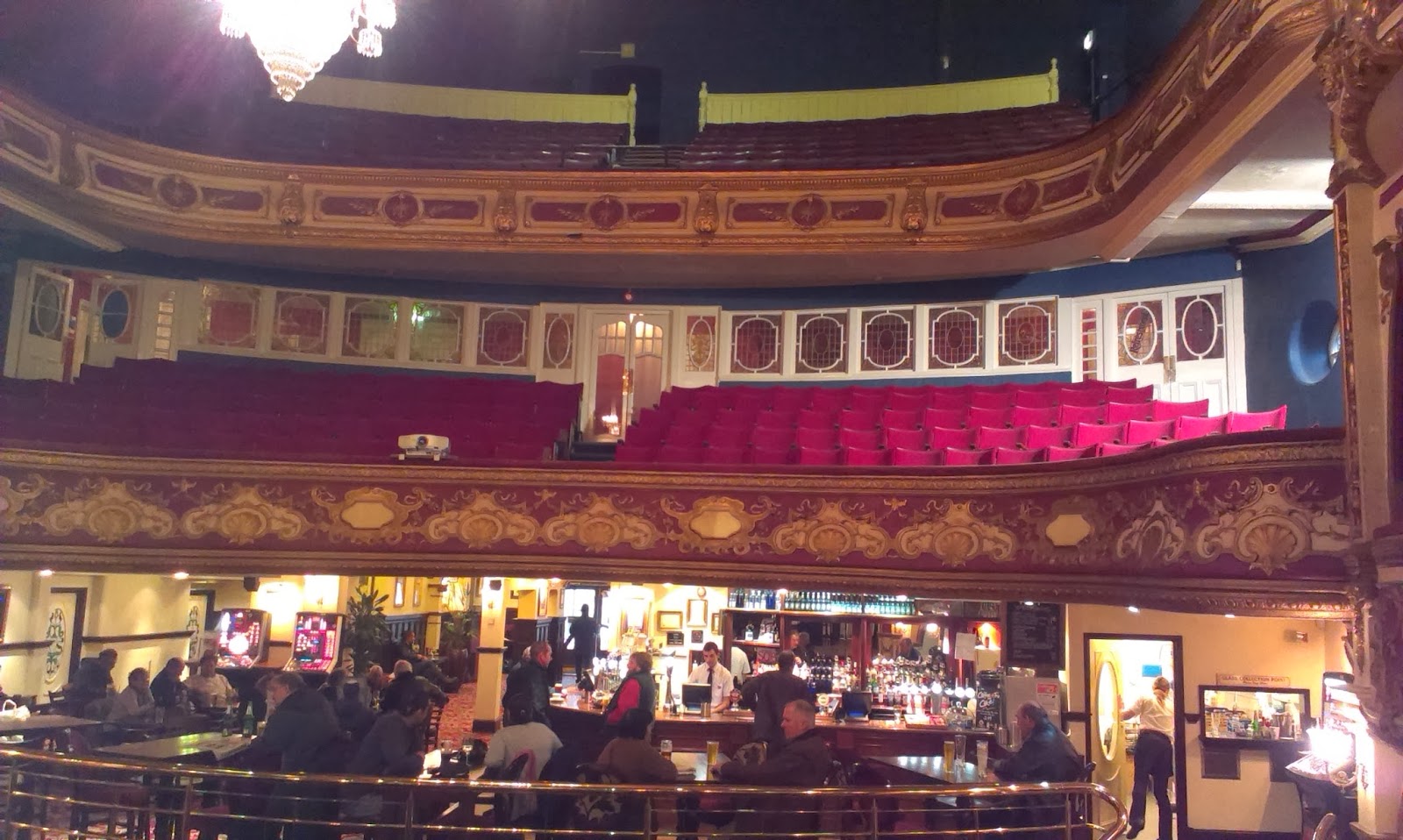Like many CAMRA branches up and down the country, West Kent
CAMRA holds an annual Christmas Dinner. This has become something of a
tradition in recent years, and is always something to look forward to.
 |
| Christmas 2014 - Royal Oak, Tunbridge Wells |
This year’s event took place at the Royal
Oak in Tunbridge Wells, where a group of 14 of us were
well looked after, both beer and food-wise, by landlady Yvonne and her team. I
went for leek and potato soup to start with, followed by the traditional roast
turkey option, with all the trimmings. Others went for the equally festive
salmon fillet. The photo below, was taken after we had all finished, so doesn’t
really do justice to the splendour of the food that was placed in front of us.
As well as the mains, the table was positively groaning under the weight from
various dishes of seasonal vegetables which formed the accompaniment. Dessert
was a choice of Christmas pudding with brandy butter, chocolate mousse or
summer pudding.
There was plenty of beer, of course, to help wash the food down, and Yvonne had provided a good selection for us. Alongside pub stalwart Harvey’s Best, there were beers from 1648, Larkins, Pig & Porter plus Rockin Robin. I stuck with the “dark side”, going for Red Spider Rye 5.5% ABV from Pig & Porter, plus my favourite dark ale at this time of year; Larkins Porter 5.2% ABV. There were good reports too for Blizzard of Oz, a 4.5% ABV Winter Warmer from Rockin Robin. We all finished suitably full to the brim, so many thanks to the Royal Oak for hosting the event.
 |
| Christmas Fayre at its best! |
 |
| Christmas 2008 - Rose & Crown, Halstead |
Brecknock Arms, Bells Yew Green. So far as I recall we held just one Christmas meal at this small, attractive Harvey’s pub, which is conveniently situated just 5 minutes walk away from Frant station. Two events slightly marred the occasion; the first was licensees Joe and Charlotte were due to leave the trade in the New Year, so there was a tinge of sadness in the air. The second concerned the pub’s heating, which had come out in sympathy with the departing tenants by packing up! We therefore arrived on a bitterly cold
 |
| Christmas Ale 2010 - Brecknock Arms |
I’m not certain what happened the following Christmas, as I was indisposed at the time. I’ve a feeling an informal gathering may have taken place at the Royal Oak, Tunbridge Wells; but would be grateful if someone could verify this. There was no meal for Christmas 2012, mainly due to a failure to decide on a suitable venue in time, but come 2013 a rising star came on the local pub scene in the form of the Windmill at Sevenoaks Weald. Licensees Matthew and Emma had succeeded in reviving the fortunes of what had become a failing village pub. Owners, Greene King had been keen to dispose of it, and rumours abounded that the pub was to be sold a private dwelling.
 |
| Dining Room - Windmill, Sevenoaks Weald |
Last year then saw a return to form for the branch Christmas meal; something which continued this year at the Royal Oak. There is though one much earlier meal which I want to look back on. This, like that at the Brecknock, is also tinged with sadness, but this was not evident at the time. The Wheatsheaf at Marsh Green was a former branch pub of the year; in fact I believe it won this award several times. A multi-roomed pub, heated by welcoming open fires during winter, serving a wide selection of interesting and often hard to obtain cask beers, topped by a menu of appetising and well-presented dishes, the Wheatsheaf had everything going for it. Everything that is apart from its remoteness. Situated in a tiny village to the south-west of Edenbridge, at the far west of the county and close to the border with Surrey, the Wheatsheaf was virtually impossible to reach by public transport..
 |
| Christmas 2002 - Wheatsheaf, Marsh Green |
This is not the time or the place to discuss the reasons for the Wheatsheaf’s sad demise, but like at least one other pub in the area the attitude of the local plod with regard to targeting drivers on the way home didn’t help. Even if one is safely under the drink-drive limit it is still an unnerving experience being pulled over and asked to provide a sample of breath. I remember being a passenger in a friend’s car one night, when we were stopped in Edenbridge High Street on the way back from Marsh Green. Plod had certainly pulled out all the stops that night, as they had the High Street coned off on both directions, and were pulling over everything on four wheels! Fortunately my friend passed the breathalyser, but I wonder how many other law-abiding, pub-going drivers have been scared off by these “bully-boy” police tactics?
This concludes my look back on a few past Christmas meals, but in the meantime I hope there are many more such feasts to come.
























